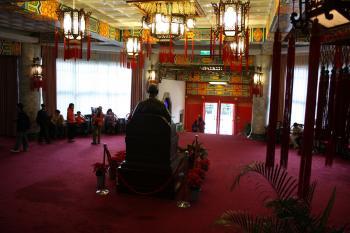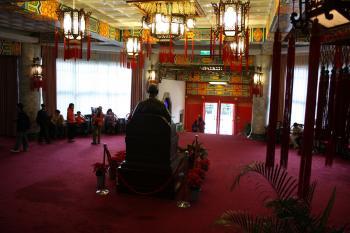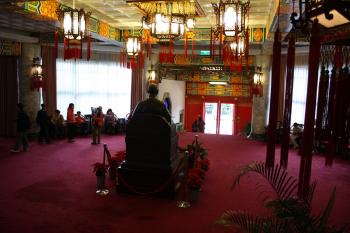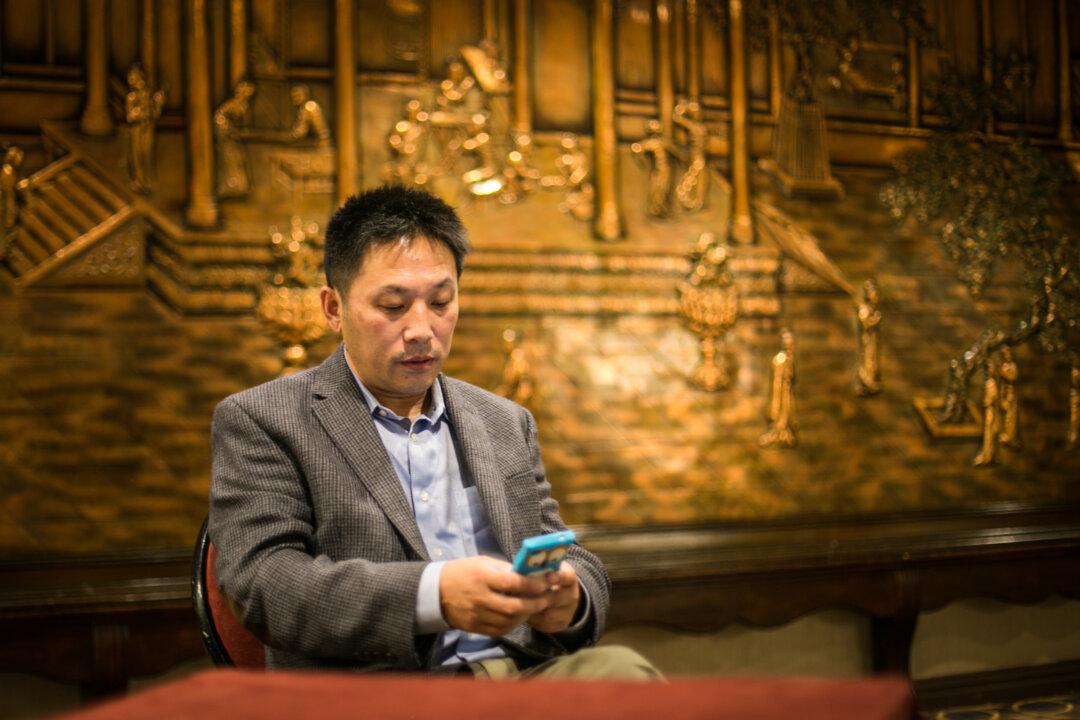TAIPEI—The first thing one notices when approaching the former Taiwanese seat of parliament, Chungshan Hall, is the smell of sulfur. The building and its surroundings were conceived 50 years ago with the utmost attention to Fengshui, the ancient Chinese tradition of geomancy. It required that the Hall be erected both in a mountain range, and near a naturally occurring sulfur pit. This is a rarity.
Chungshan Hall was Sun Yat Sen’s idea originally. A place was needed for the parliament of Taiwan to unite, hold meetings, discuss policy, and run the country. In 1956, after overcoming a great many troubles, architects and builders announced the 34 metre high, two-buildings-in-one, complete.
Chungshan Hall is made up of a separate front and back part. They have different foundations, and are essentially two different structures, but are connected to each other seamlessly from the inside. The original architect, Hsiu Tse-Lan, feared that the high clay content of the ground in the area, on top of a sulfur pit and a former volcano, was too unstable. By splitting the building in two, they hoped that if the back part collapsed into the abyss it would not take the front part with it. The presidential suite was located in the front.
The foundations of the building were also sunk seven metres underground to ensure stability.
Upon entering the building one is greeted with a plush lobby area. A giant Chiang Kai Shek sits on a chair, his gaze fixed on the entrance. Around him are ornate wooden lights with dangling red threads and intricately patterned rafters in multifarious colors, which suggests a very pronounced Chinese aesthetic. Visitors mill around and take photos, or sit down into the wide, wooden chairs.
Chungshan Hall was Sun Yat Sen’s idea originally. A place was needed for the parliament of Taiwan to unite, hold meetings, discuss policy, and run the country. In 1956, after overcoming a great many troubles, architects and builders announced the 34 metre high, two-buildings-in-one, complete.
Chungshan Hall is made up of a separate front and back part. They have different foundations, and are essentially two different structures, but are connected to each other seamlessly from the inside. The original architect, Hsiu Tse-Lan, feared that the high clay content of the ground in the area, on top of a sulfur pit and a former volcano, was too unstable. By splitting the building in two, they hoped that if the back part collapsed into the abyss it would not take the front part with it. The presidential suite was located in the front.
The foundations of the building were also sunk seven metres underground to ensure stability.
Upon entering the building one is greeted with a plush lobby area. A giant Chiang Kai Shek sits on a chair, his gaze fixed on the entrance. Around him are ornate wooden lights with dangling red threads and intricately patterned rafters in multifarious colors, which suggests a very pronounced Chinese aesthetic. Visitors mill around and take photos, or sit down into the wide, wooden chairs.








